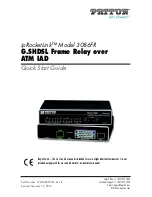
368
Configuring OSPFv3
This chapter describes how to configure RFC 2740-compliant Open Shortest Path First version 3 (OSPFv3)
for an IPv6 network. For more information about OSPFv2, see "
Configuring OSPF
."
OSPFv3 overview
OSPFv3 and OSPFv2 have the following in common:
•
32-bit router ID and area ID
•
Hello, Database Description (DD), Link State Request (LSR), Link State Update (LSU), Link State
Acknowledgment (LSAck)
•
Mechanisms for finding neighbors and establishing adjacencies
•
Mechanisms for advertising and aging LSAs
OSPFv3 and OSPFv2 have the following differences:
•
OSPFv3 runs on a per-link basis. OSPFv2 runs on a per-IP-subnet basis.
•
OSPFv3 supports running multiple processes on an interface, but OSPFv2 does not support.
•
OSPFv3 identifies neighbors by router ID. OSPFv2 identifies neighbors by IP address.
OSPFv3 packets
OSPFv3 uses the following packet types:
•
Hello
—Periodically sent to find and maintain neighbors, containing timer values, information about
the DR, BDR, and known neighbors.
•
DD
—Describes the digest of each LSA in the LSDB, exchanged between two routers for data
synchronization.
•
LSR
—Requests needed LSAs from the neighbor. After exchanging the DD packets, the two routers
know which LSAs of the neighbor are missing from their LSDBs. They then send an LSR packet to
each other, requesting the missing LSAs. The LSA packet contains the digest of the missing LSAs.
•
LSU
—Transmits the requested LSAs to the neighbor
•
LSAck
—Acknowledges received LSU packets.
OSPFv3 LSA types
OSPFv3 sends routing information in LSAs. The following LSAs are commonly used:
•
Router LSA
—Type-1 LSA, originated by all routers. This LSA describes the collected states of the
router's interfaces to an area, and is flooded throughout a single area only.
•
Network LSA
—Type-2 LSA, originated for broadcast and NBMA networks by the DR. This LSA
contains the list of routers connected to the network, and is flooded throughout a single area only.
•
Inter-Area-Prefix LSA
—Type-3 LSA, originated by ABRs and flooded throughout the LSA's
associated area. Each Inter-Area-Prefix LSA describes a route with IPv6 address prefix to a
destination outside the area, yet still inside the AS.
















































